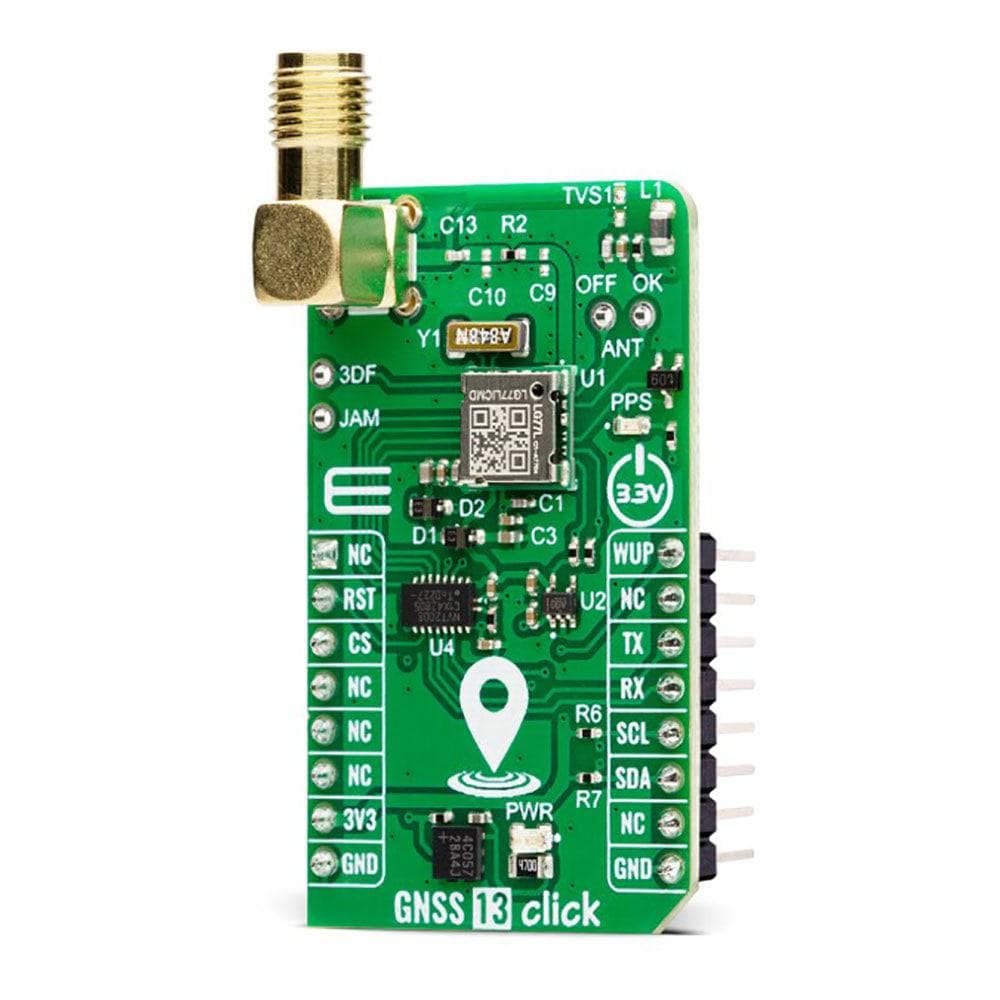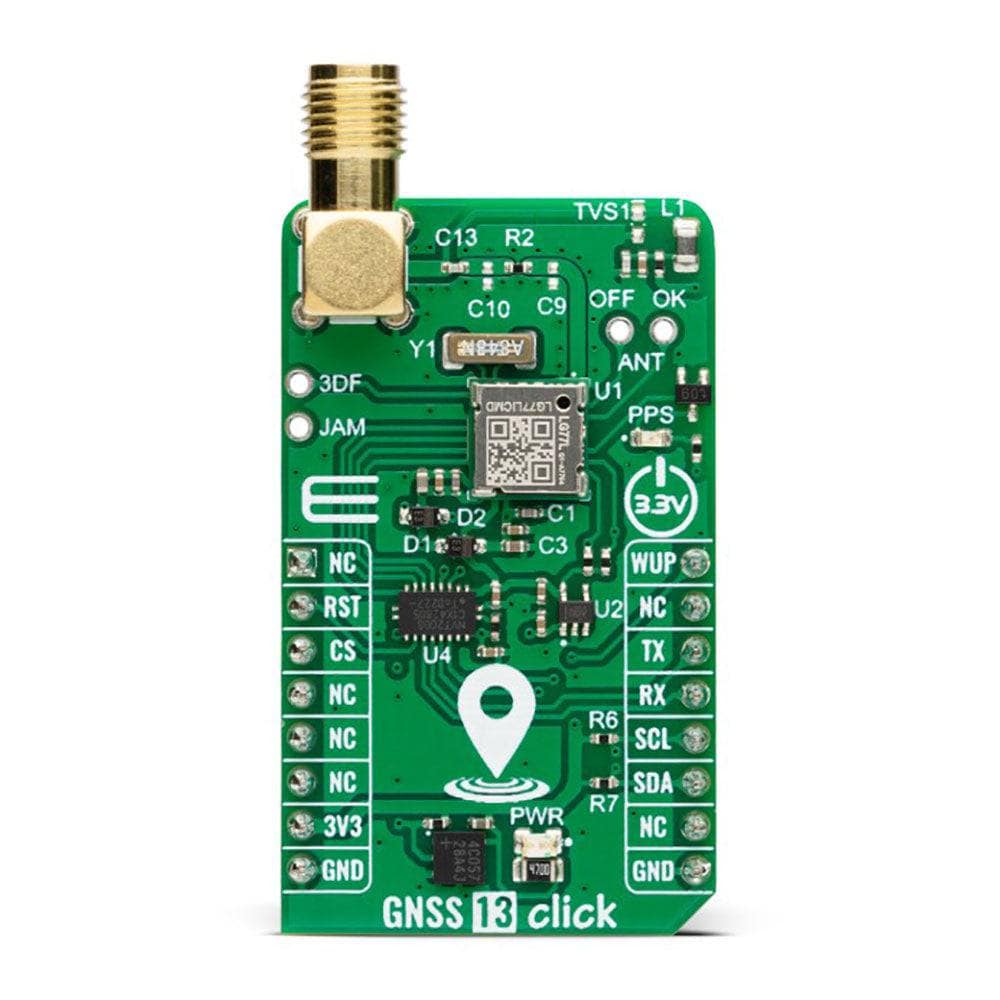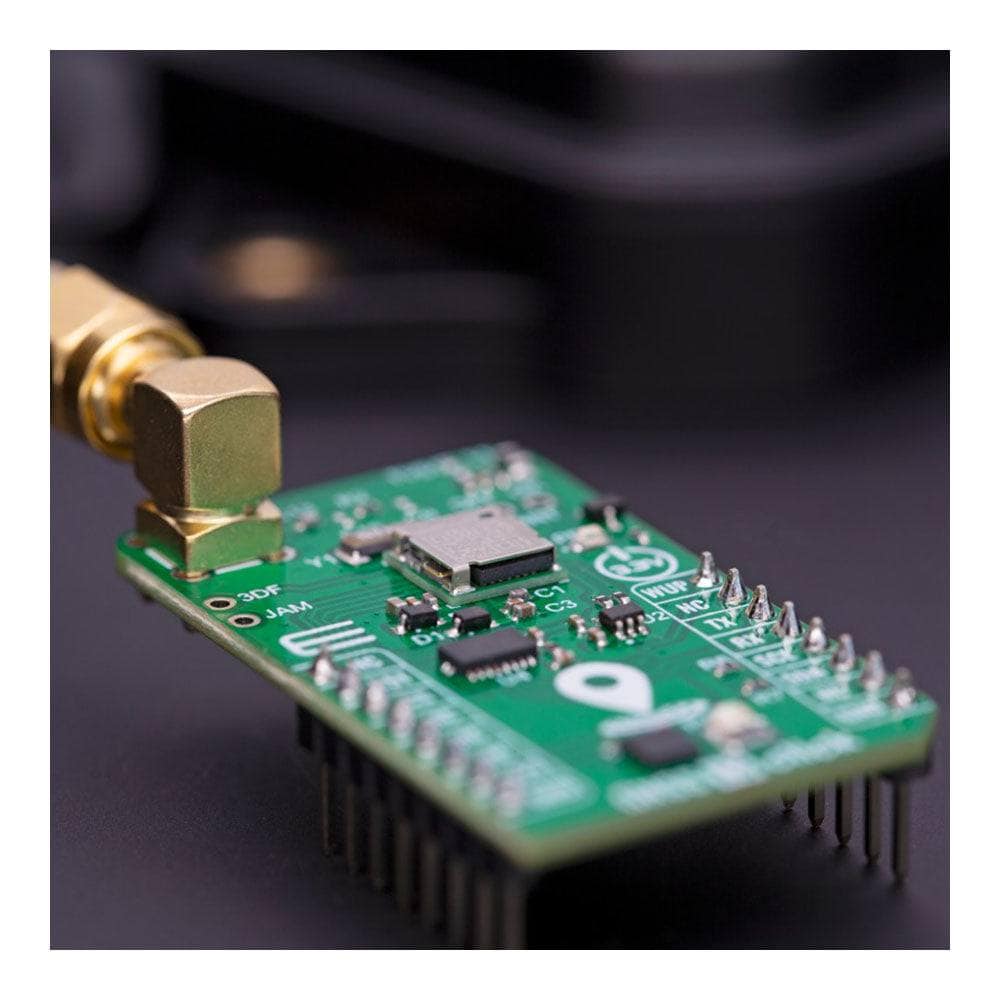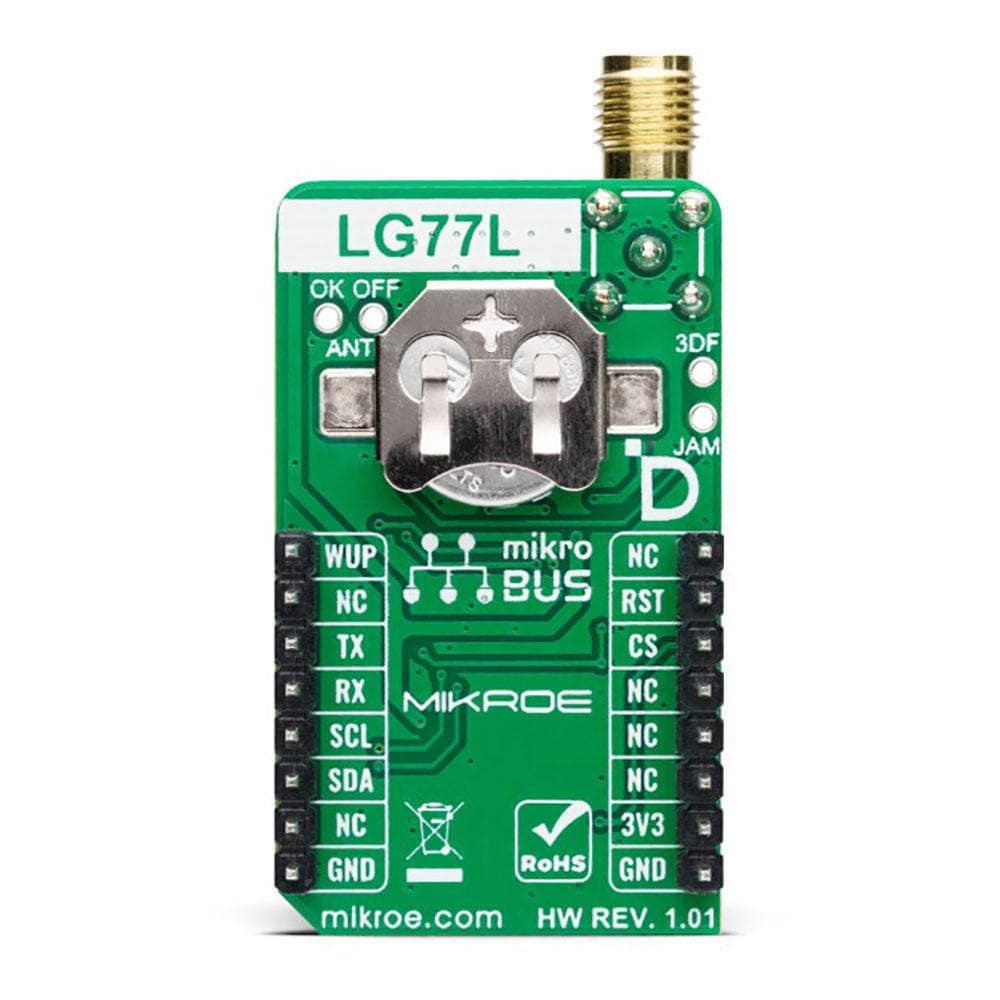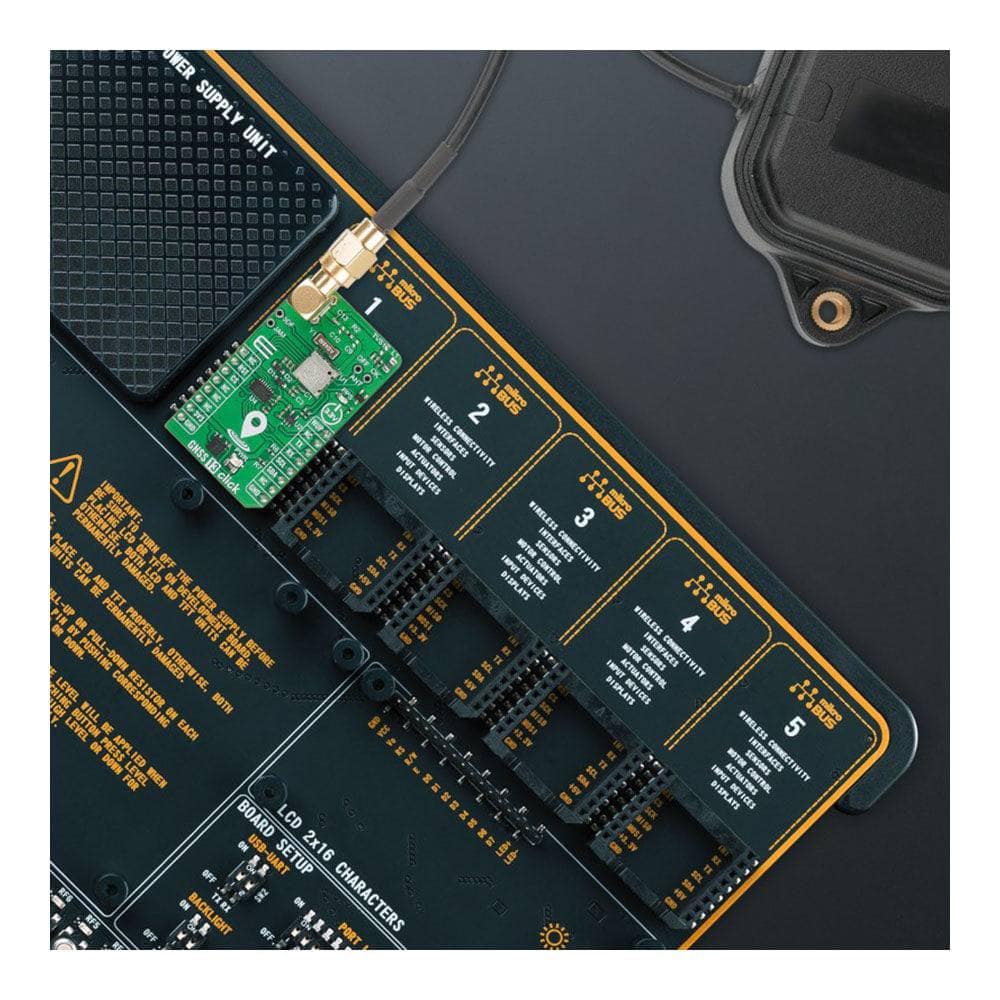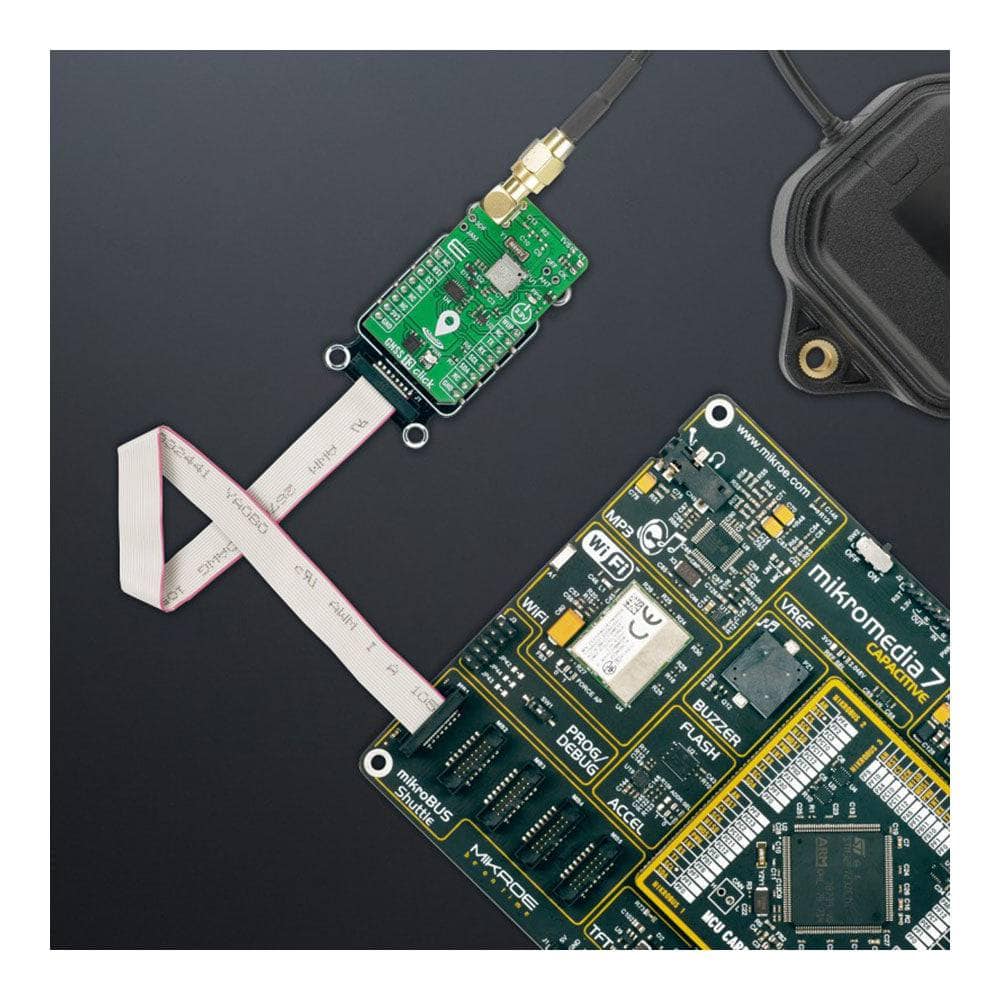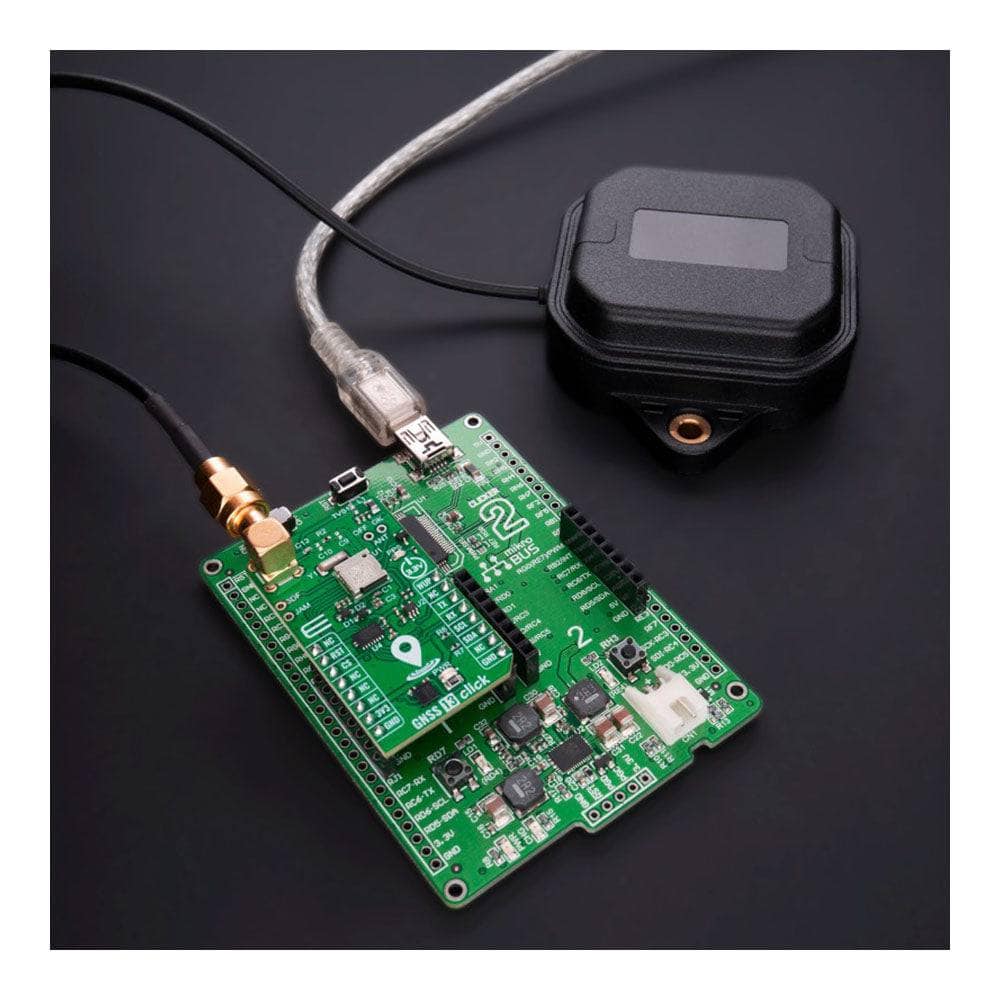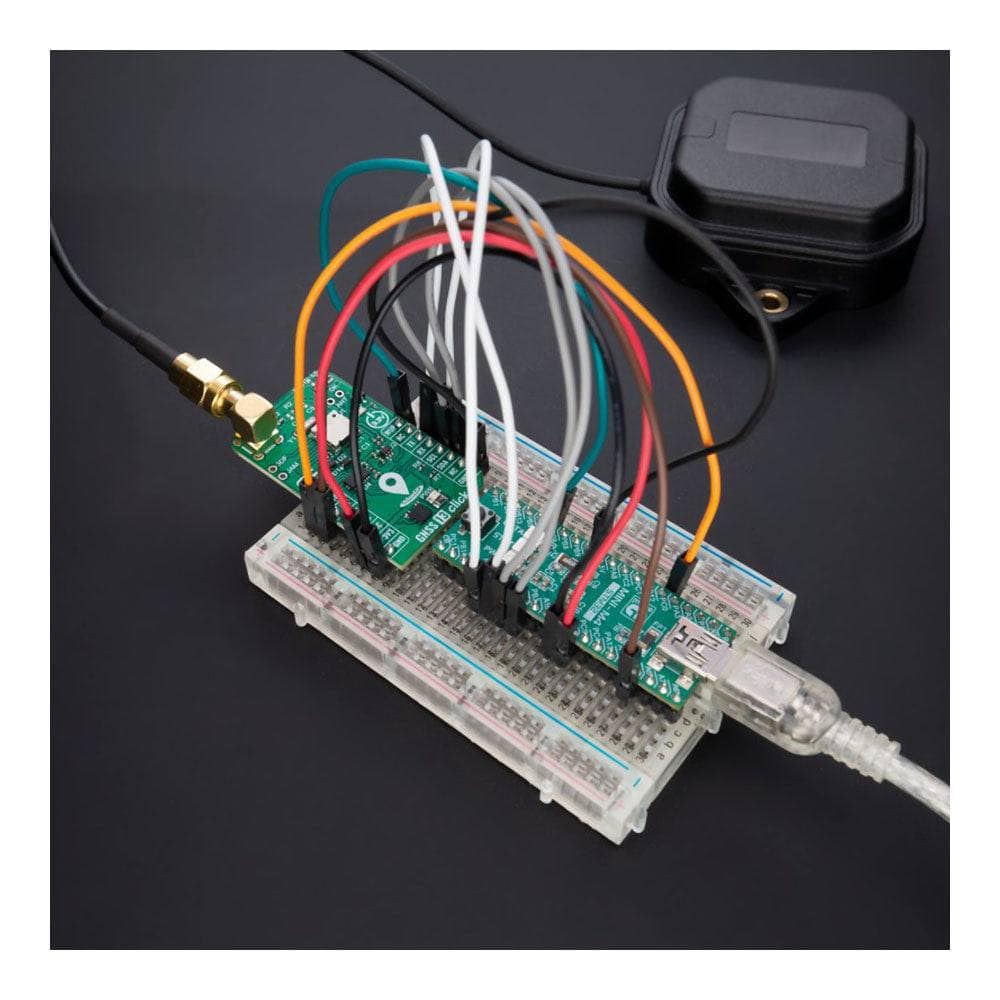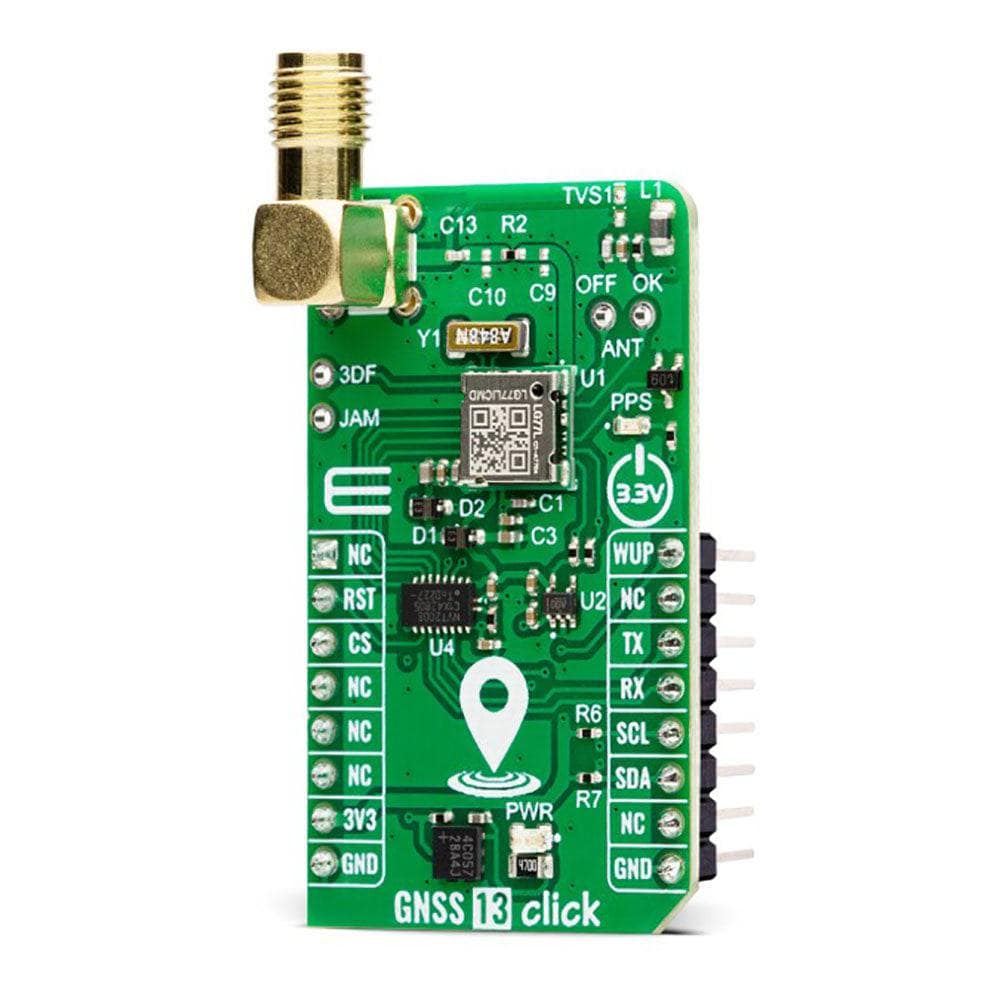
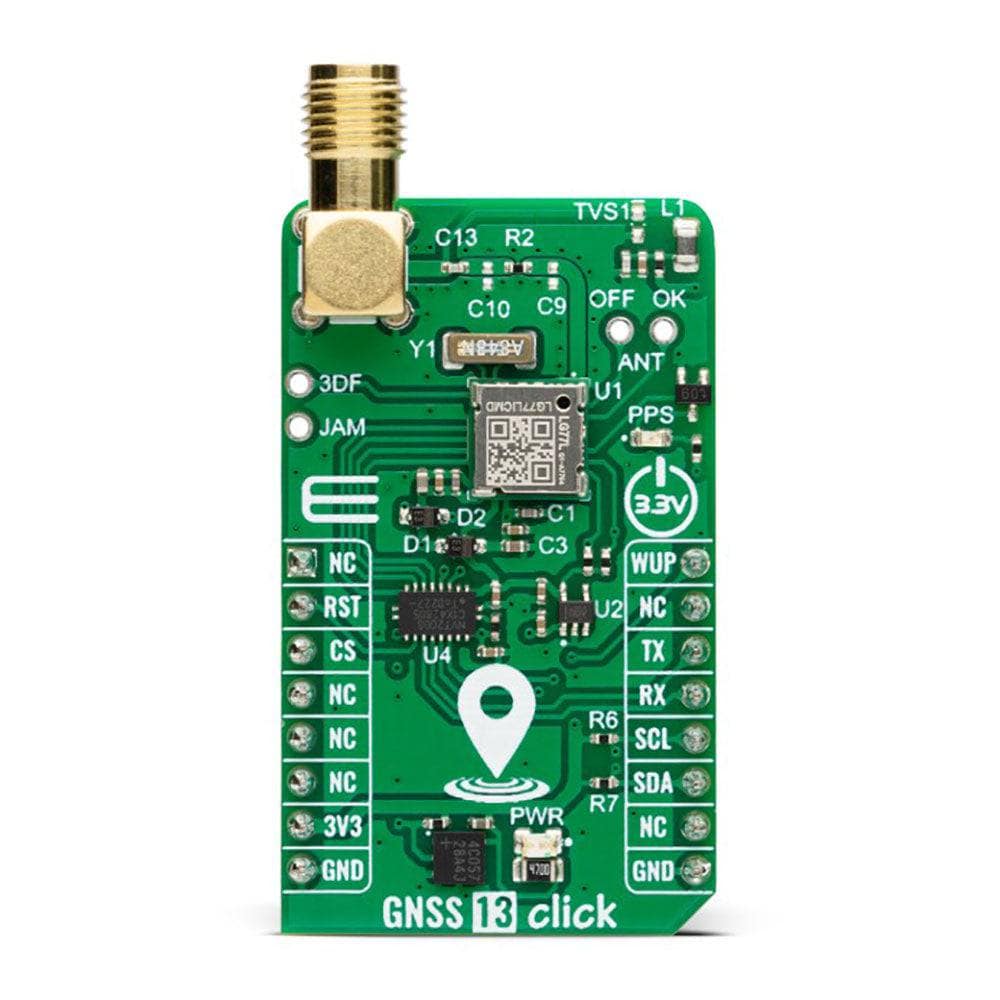
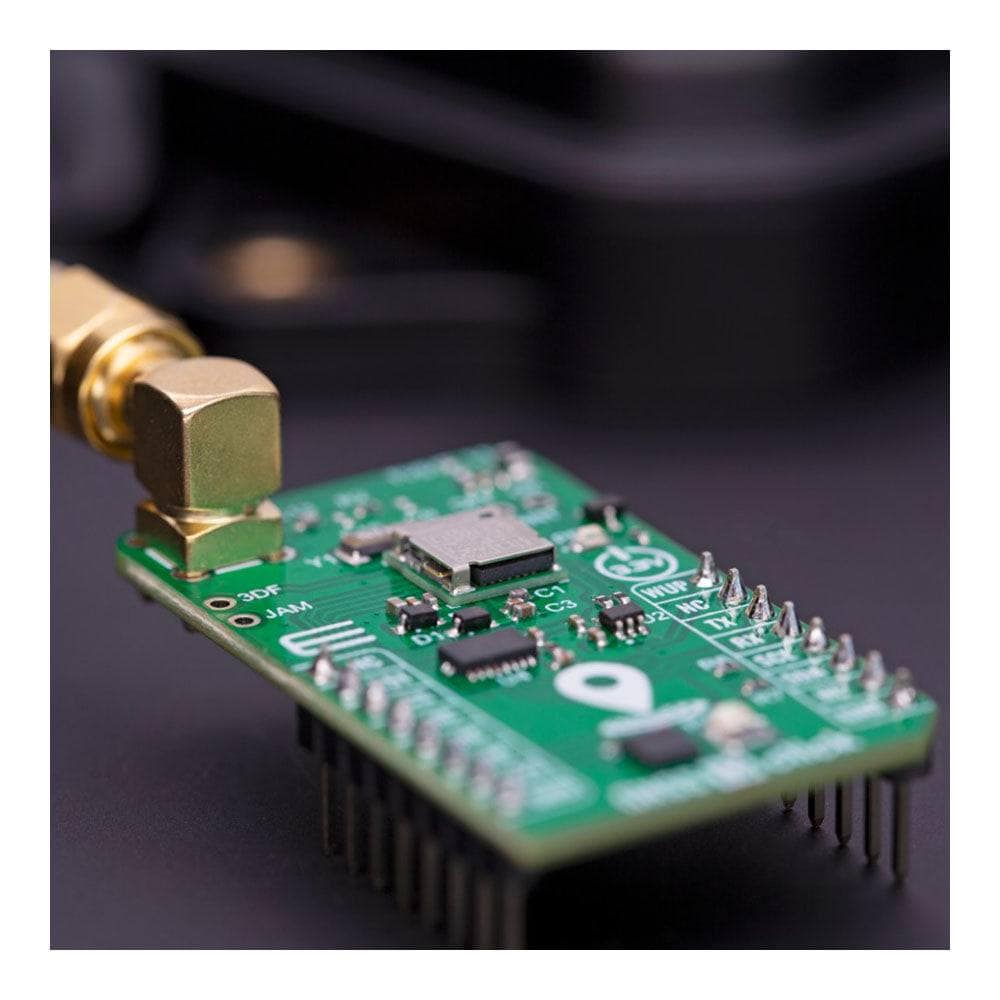
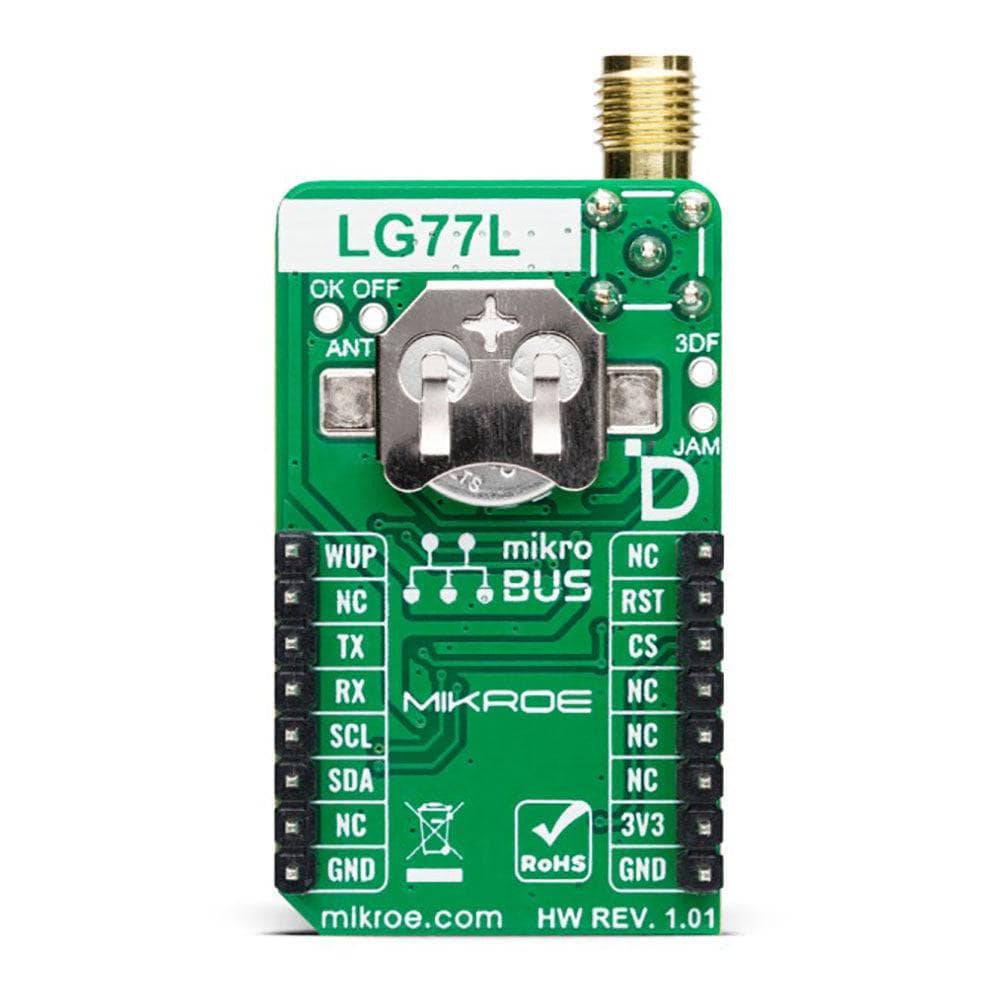
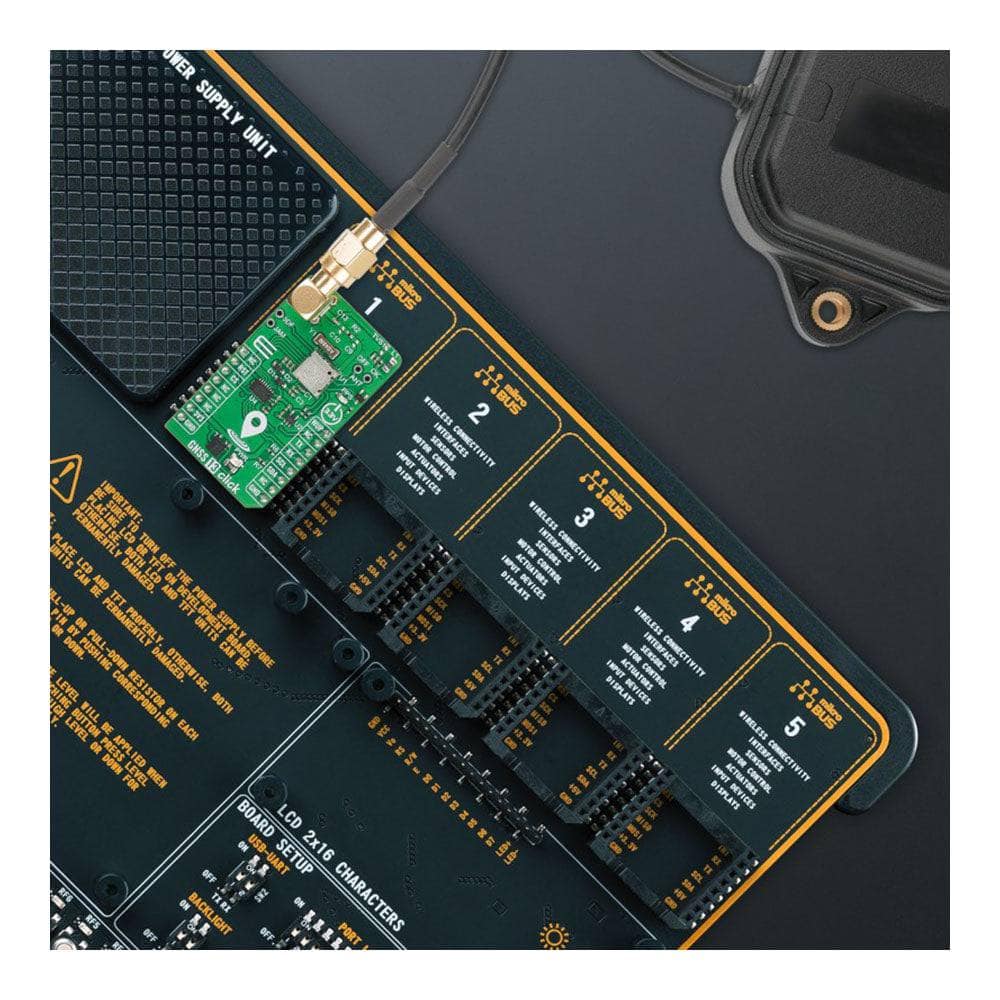
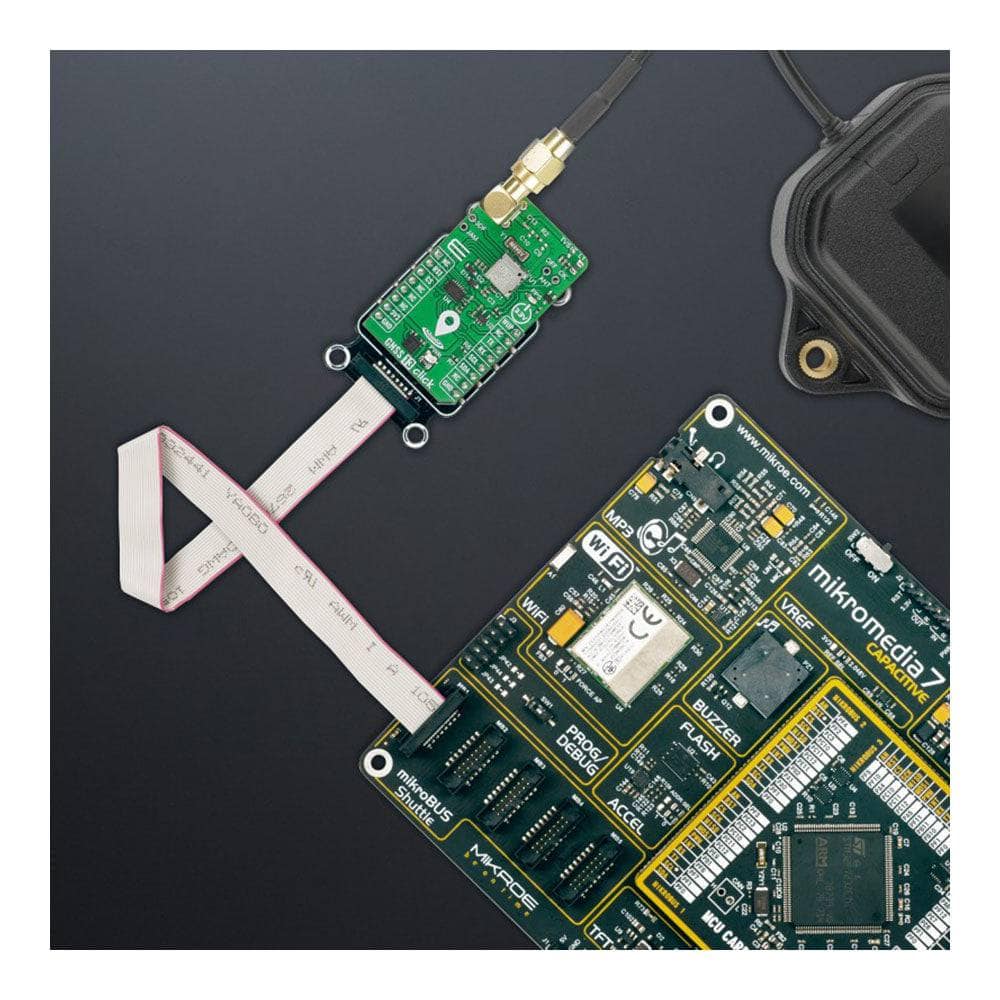
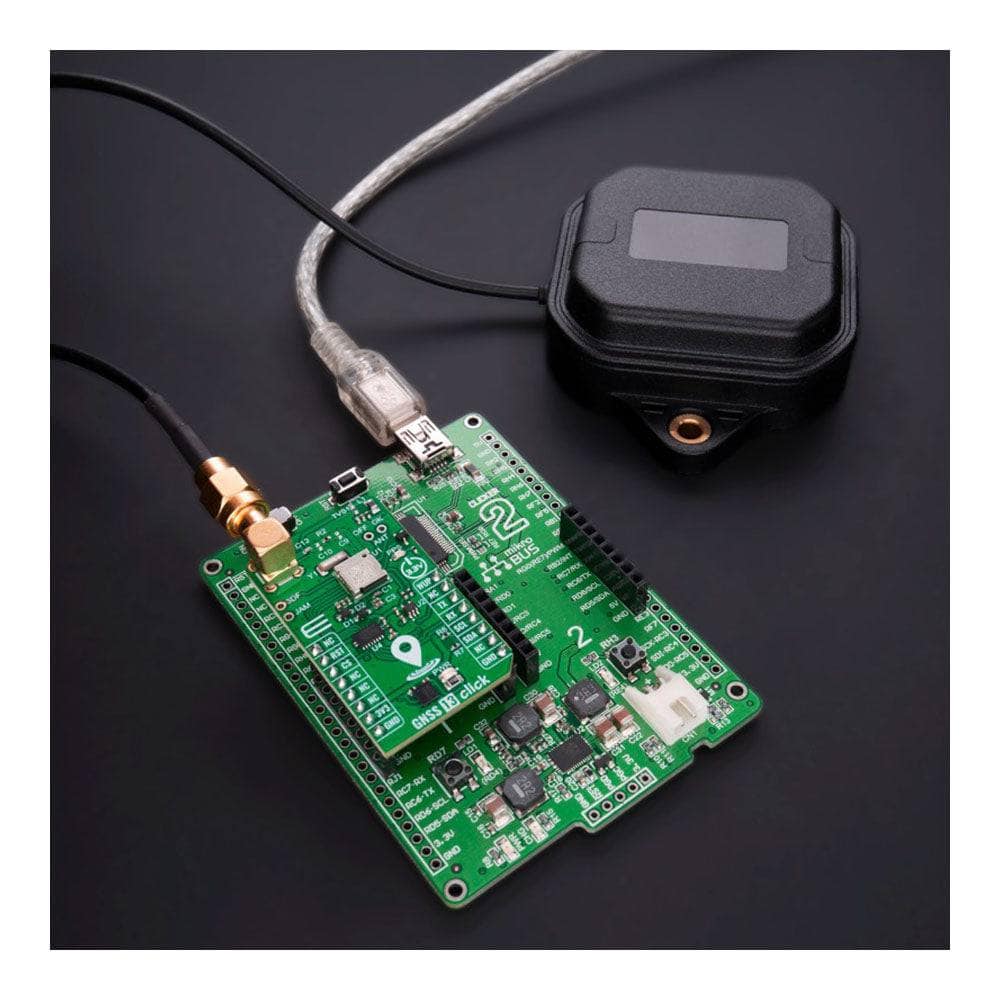
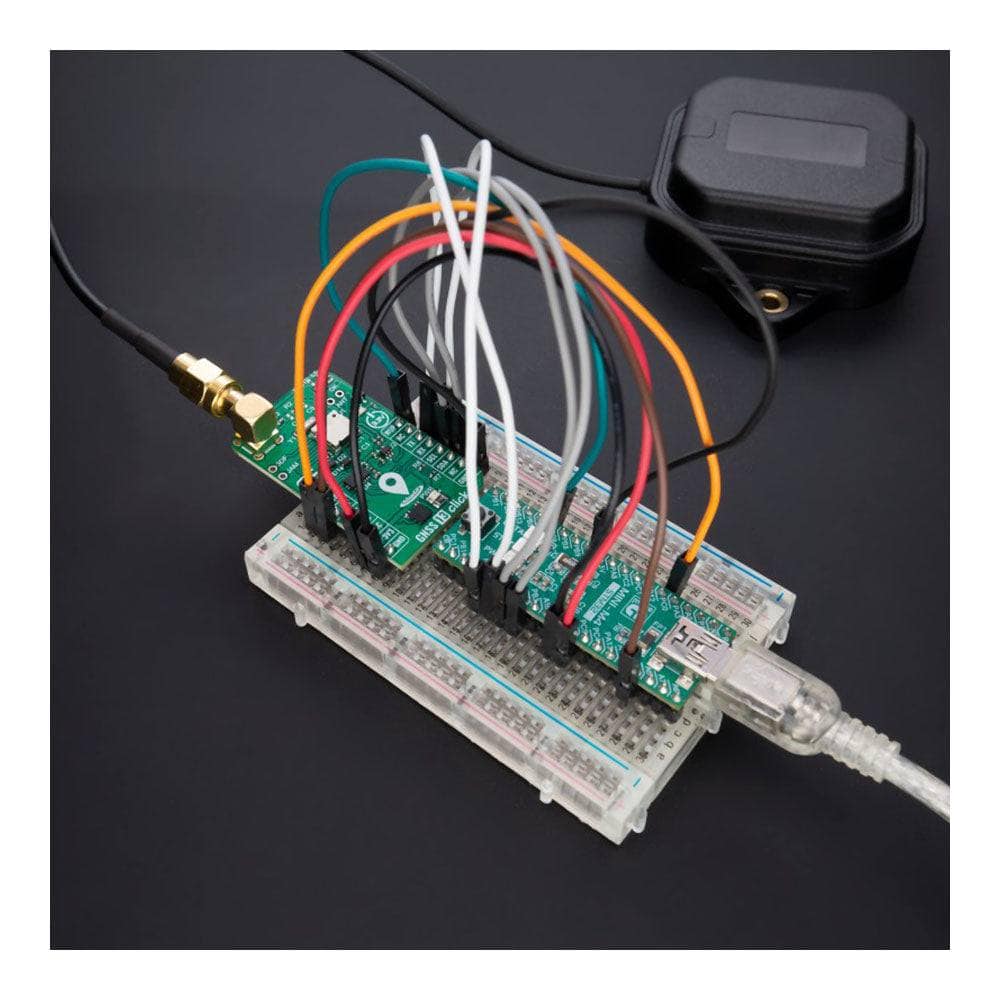
Key Features
Overview
Introducing the GNSS 13 Click Board™: Advanced Positioning for Your Applications
Experience cutting-edge positioning, navigation, and timing services with the GNSS 13 Click Board™. This compact add-on board features the LG77LICMD, a global-region standard-precision GNSS module from Quectel Wireless Solutions. With concurrent reception of up to three GNSS systems - GPS, GLONASS (or BeiDou), and Galileo - you'll enjoy maximum position availability, even in challenging conditions such as deep urban canyons.
High Performance and Low Power Consumption
By combining EASY™ (Embedded Assist System), an advanced AGNSS feature, with GLP (GNSS Low Power), a low-power mode, the LG77LICMD module achieves the perfect balance between high performance and low power consumption. This fully meets industrial standards, ensuring you have a reliable solution for your projects.
Advanced Features for Enhanced GNSS Performance
This Click board™ offers a configurable host interface, anti-jamming technology, and a multi-tone active interference canceller. These features make it the ideal choice for industrial and consumer applications, such as asset trackers, without compromising GNSS performance.
Seamless Integration with mikroSDK
The GNSS 13 Click Board™ is supported by a mikroSDK-compliant library, which includes functions that simplify software development. With this Click board™, you get a fully tested product, ready for use on a system equipped with the mikroBUS™ socket.
Downloads
Einführung des GNSS 13 Click Board™: Erweiterte Positionierung für Ihre Anwendungen
Erleben Sie modernste Positionierungs-, Navigations- und Zeitdienste mit dem GNSS 13 Click Board™. Diese kompakte Zusatzplatine verfügt über das LG77LICMD, ein GNSS-Modul mit globaler Standardpräzision von Quectel Wireless Solutions. Mit dem gleichzeitigen Empfang von bis zu drei GNSS-Systemen – GPS, GLONASS (oder BeiDou) und Galileo – genießen Sie maximale Positionsverfügbarkeit, selbst unter schwierigen Bedingungen wie tiefen Stadtschluchten.
Hohe Leistung und geringer Stromverbrauch
Durch die Kombination von EASY™ (Embedded Assist System), einer erweiterten AGNSS-Funktion, mit GLP (GNSS Low Power), einem Energiesparmodus, erreicht das Modul LG77LICMD die perfekte Balance zwischen hoher Leistung und geringem Stromverbrauch. Dies entspricht vollständig den Industriestandards und stellt sicher, dass Sie eine zuverlässige Lösung für Ihre Projekte haben.
Erweiterte Funktionen für eine verbesserte GNSS-Leistung
Dieses Click Board™ bietet eine konfigurierbare Hostschnittstelle, Anti-Jamming-Technologie und einen aktiven Mehrton-Interferenzunterdrücker. Diese Funktionen machen es zur idealen Wahl für Industrie- und Verbraucheranwendungen wie Asset Tracker, ohne die GNSS-Leistung zu beeinträchtigen.
Nahtlose Integration mit mikroSDK
Das GNSS 13 Click Board™ wird von einer mikroSDK-kompatiblen Bibliothek unterstützt, die Funktionen enthält, die die Softwareentwicklung vereinfachen. Mit diesem Click Board™ erhalten Sie ein vollständig getestetes Produkt, das für den Einsatz auf einem System mit der mikroBUS™-Buchse bereit ist.
| General Information | |
|---|---|
Part Number (SKU) |
MIKROE-5580
|
Manufacturer |
|
| Physical and Mechanical | |
Weight |
0.02 kg
|
| Other | |
Country of Origin |
|
HS Code Customs Tariff code
|
|
EAN |
8606027384493
|
Warranty |
|
Frequently Asked Questions
Have a Question?
-
Is software development for the GNSS 13 Click Board™ easy?
Yes, the GNSS 13 Click Board™ is supported by a mikroSDK-compliant library, which includes functions that simplify software development.
-
What applications is the GNSS 13 Click Board™ suitable for?
The GNSS 13 Click Board™ is ideal for industrial and consumer applications such as asset trackers without compromising GNSS performance.
-
What features does the LG77LICMD module have?
The LG77LICMD module features EASY™ (Embedded Assist System), an advanced AGNSS feature, with GLP (GNSS Low Power), a low-power mode. It also has a configurable host interface, anti-jamming technology, and a multi-tone active interference canceller.
-
What GNSS systems does the LG77LICMD module support?
The LG77LICMD module supports concurrent reception of up to three GNSS systems: GPS, GLONASS (or BeiDou), and Galileo. This maximizes position availability, especially under challenging conditions such as deep urban canyons.
-
What is the GNSS 13 Click Board™?
The GNSS 13 Click Board™ is a compact add-on board that provides positioning, navigation, and timing services. It features the LG77LICMD, a global-region standard-precision GNSS module from Quectel Wireless Solutions.

